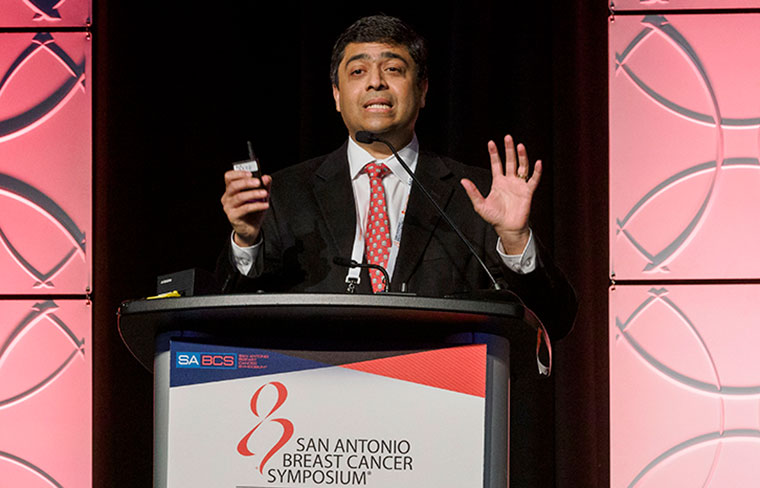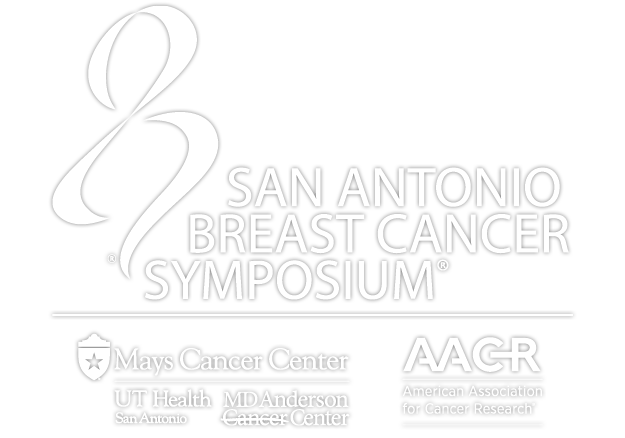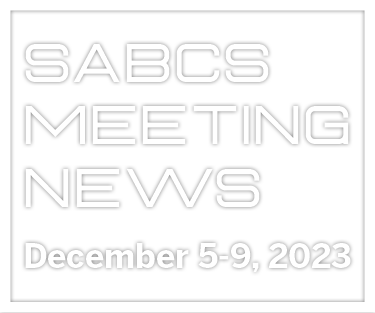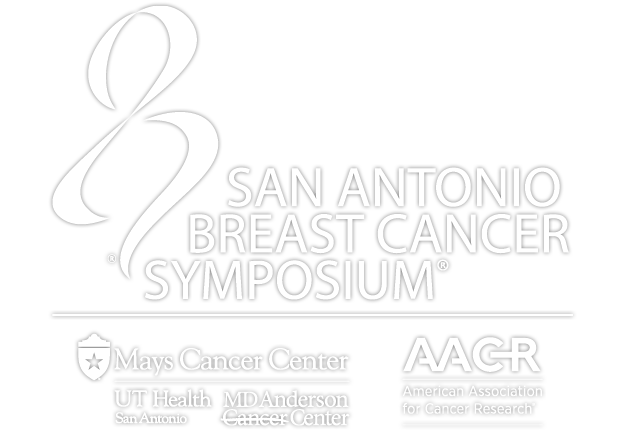Genomics are driving a new era of tumor-agnostic therapies for cancer in which drugs are approved for biomarkers rather than cancer types. As of December 2023, there are six different tissue-agnostic medicines approved for seven different indications within oncology.
“To ensure that every patient with solid tumors who could benefit from histology-agnostic therapies is identified, it will be essential to identify these biomarkers by comprehensive genomic testing,” said Vivek Subbiah, MD, Chief of the Early Phase Drug Development Unit at the Sarah Cannon Research Institute, in the 2023 SABCS® Clinical Workshop: Tumor Agnostic Approaches to Care. The session is available on demand for registered Symposium participants through March 31, 2024, on the meeting platform.

The first tumor-agnostic drug approval from the FDA came in 2017 for pembrolizumab for use with solid tumors in deficient mismatch repair (dMMR) and microsatellite instability-high (MSI-H) cancers. The approval was based on retrospective real-world data on genomic markers. In 2020, pembrolizumab also gained approval for use in tumor mutation burden-high (TMB-H) cancers. Other tumor-agnostic drugs with FDA approval for cancer treatment include:
- Larotrectinib for neurotrophic tyrosine receptor kinase (NTRK) fusion-positive cancers (2018)
- Entrectinib for NTRK fusion-positive cancers (2019)
- Dostarlimab for dMMR/MSI-H cancers (2021)
- Dabrafenib/trametinib for unresectable or metastatic BRAF V600E mutant cancers (2022)
- Selpercatinib for RET fusion-positive cancers (2022)
Several additional tumor-agnostic therapies are in the pipeline with the potential to expand the possibilities for precision medicine in oncology.
Research has shown promising activity from RLY-4008 (lirafugratinib) in patients with heavily pretreated HR-positive, HER2-negative breast cancer with FGFR2 alterations. The eNRGy trial is evaluating the use of zenocutuzumab in patients with NRG1 fusions. Ongoing clinical trials also are investigating the efficacy of seribantumab (CRESTONE, NCT04383210) and afatinib (NCT04410653) in patients with NRG1 fusion-positive tumors. Phase 2 of KRYSTAL-1 is studying the use of adagrasib in KRAS G12C-mutated solid tumors, excluding non-small cell lung cancer (NSCLC) and colorectal cancer.

Antibody drug conjugates (ADCs) also have seen rapid development for cancer therapy. Since the FDA approval of gemtuzumab ozogamicin for the treatment of acute myeloid leukemia in 2000, more than a dozen ADCs have received FDA approval and more than 300 ADCs are in clinical development, said Joshua Z. Drago, MD, MS, Assistant Attending Physician, Breast Medicine Service at Memorial Sloan Kettering Cancer Center.
He provided examples of ADC efficacy for the treatment of lung cancer and colon cancer.
“There’s a lot of interesting development going on beyond breast cancer,” Dr. Drago said. “Sometimes we can get siloed as oncologists in our own subspecialty field, so it’s always important to look beyond that to see what kind of take-homes we can learn from and use to inspire care of our own cancers.”
The prospective clinical trial DESTINY-Lung01 found trastuzumab deruxtecan (T-DXd) has activity in HER2-mutant advanced NSCLC, even in the absence of HER2 expression by immunohistochemistry. Compared to wild type HER2, the lung cancer cell lines that harbor HER2 mutation internalize more ADC, Dr. Drago explained.
Data from the phase 2 DESTINY-PanTumor01 trial demonstrate the efficacy of T-DXd in metastatic breast cancer as well. However, response to T-DXd differs across cancer types despite similar target expression. The objective response rate is 78.5% for HER2-positive breast cancer and 45.3% for HER2-positive colorectal cancer.
Differential sensitivity to the ADC payload may be responsible for this variation, Dr. Drago said, but he offered another possibility.
“We know that HER2 surface dynamics depend on the dimerization partner and interestingly, EGFR-HER2 heterodimers are highly stable on the cell surface. They do not internalize rapidly,” Dr. Drago said. “[Looking at] a colon cancer line, if you overexpress EGFR, you find you tilt the scales toward more EGFR-HER2 heterodimers over homodimers. One would hypothesize that would slow the internalization and delivery of ADC, and that’s exactly what we see.”

Mia Levy, MD, PhD, Chief Medical Officer for Foundation Medicine, Inc., discussed the application of real-world data in relation to the relatively new biomarker, homologous recombination deficiency (HRD), which is common in several BRCA-associated cancers, including breast, ovarian, pancreas, and prostate cancers.
“I’m really excited about the potential opportunities in breast cancer for the use of this biomarker,” Dr. Levy said. “The number of patients who may potentially benefit from these medications if you just compare the 3.4 percent who currently are found to have a germline BRCA to the 21 percent who may have this HRD signature, it really opens up a whole new opportunity.”
Individuals with HRD are deficient in homologous recombination repair (HRR), a cellular pathway that repairs double-stranded breaks in DNA to ensure chromosomal integrity and cell viability, she explained.
“HRD tumors are hypothesized to be more susceptible to DNA-damaging therapeutics through a process called synthetic lethality confirmed through practice-changing trials with platinum chemotherapies and PARP inhibitors as seen in ovarian cancer, HER2-negative breast cancer, pancreatic cancer, and prostate cancer.”

Marleen Kok, MD, PhD, Associate Professor at the Netherlands Cancer Institute, discussed defining a biologic entity that is sensitive to immunotherapy. She underscored the need for coordination among multiple stakeholders, including registrational trials and translational research, to maximize the effectiveness of immunotherapy.
“Those worlds should come together,” Dr. Kok said. “Guideline committees should also take into account biomarkers that come from different trials because a good biomarker will lower the number needed to treat, will lower the patients who have unnecessary toxicity, and will lower financial toxicity.”
Biomarker-driven data is needed to determine optimal treatment duration, further reducing toxicity and financial burden, she said.
“Neoadjuvant immunotherapy is the way to go because it gives you the opportunity to monitor the response, to think about escalation and de-escalation, because in the neoadjuvant setting you have only one chance to reach your PCR (pathological complete response),” Dr. Kok said.
As the cost of gene sequencing continues to fall, more cancer patients will have access to insights into their unique histology.
When the first human genome was sequenced three decades ago, it cost $3 billion, Dr. Subbiah said. Today, gene sequencing costs about $1,000 in the U.S. and $50 in India and China, he continued. Some estimates predict the cost could drop to just $1 within the next 10 years.
“Every patient is going to get genomically tested in a clinic near you in the decade, so we have to be an oncology genomics-savvy workforce,” Dr. Subbiah said.



